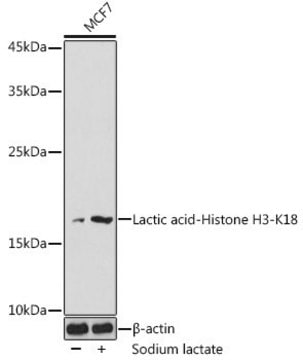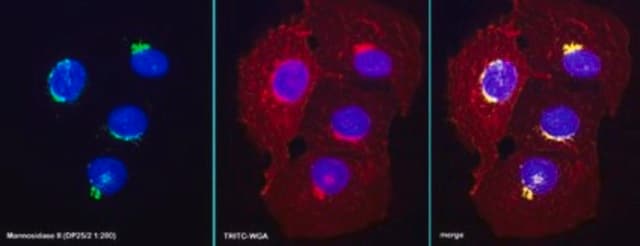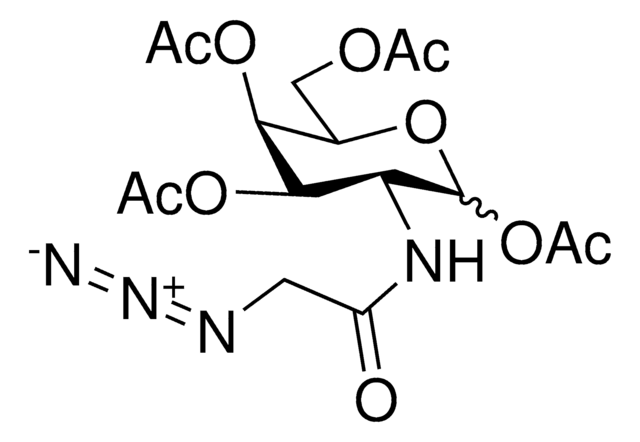G2404
Anti-Golgi FTCD antibody, clone 58k-9, Mouse monoclonal
ascites fluid
Synonym(s):
Anti-LCHC1
About This Item
Recommended Products
biological source
mouse
Quality Level
conjugate
unconjugated
antibody form
ascites fluid
antibody product type
primary antibodies
mol wt
antigen 58 kDa
contains
15 mM sodium azide
species reactivity
human, bovine, mouse, pig, canine, kangaroo rat, hamster, monkey, rat
technique(s)
electron microscopy: suitable
indirect immunofluorescence: 1:50 using cultured CHO cells
western blot: 1:5,000 using whole rat liver extract
isotype
IgG1
UniProt accession no.
shipped in
dry ice
storage temp.
−20°C
target post-translational modification
unmodified
Gene Information
human ... FTCD(10841)
mouse ... Ftcd(14317)
rat ... Ftcd(89833)
Related Categories
General description
Specificity
Immunogen
Application
The antibody was used:
- for the analysis of distribution of the 58K9 protein exclusively localized in the Golgi
- as a primary antibody in the immunofluorescence analysis in studies related to functioning of nuclear envelope protein TMEM209 in lung carcinoma cells, tracking TG2 (Transglutaminase Type 2) transport in renal tubular epithelial cells, binding of TRADD (TNFR-associated death domain protein) to TNF-R1 at the plasma membrane and localization of Wilson disease protein in the Golgi apparatus
- in immunoprecipitation studies
Immunofluorescence (1 paper)
Western Blotting (1 paper)
Biochem/physiol Actions
Disclaimer
Not finding the right product?
Try our Product Selector Tool.
Storage Class Code
12 - Non Combustible Liquids
WGK
nwg
Flash Point(F)
Not applicable
Flash Point(C)
Not applicable
Certificates of Analysis (COA)
Search for Certificates of Analysis (COA) by entering the products Lot/Batch Number. Lot and Batch Numbers can be found on a product’s label following the words ‘Lot’ or ‘Batch’.
Already Own This Product?
Find documentation for the products that you have recently purchased in the Document Library.
Our team of scientists has experience in all areas of research including Life Science, Material Science, Chemical Synthesis, Chromatography, Analytical and many others.
Contact Technical Service








